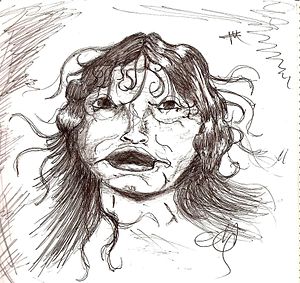Ten or fifteen years ago I learned not to take even basic assumptions for granted.
I used to teach a course called “Children’s Literature” at a public university. My students were future teachers–mainly K-8, but also secondary school. A large percentage of them were first and second generation and primarily from Mexico/Central America.
Children’s literature is divided into different genres of lit, just as is literature for adults. For children, the genres include picture books, young adult novels, poetry, traditional literature, and more. Traditional lit covers fairy tales, folk tales, and myths. Picture books based on “Hansel and Gretel” or “The Old Lady Who Swallowed the Fly” are both picture books and traditional lit.
I liked to teach stories from the different continents. I particularly enjoyed taking a tale, such as “Cinderella,” which is told in various parts of the world and looking at the cultural differences. Seven hundred folk (pre-picture books and movies) versions of this one tale exist.
One academic quarter, I got a flyer in my department mailbox about a play being put on by the drama department. It sounded ideal as it was coming at a time we were studying folk and fairy tales. The play was a spoof on some of the traditional tales. Since it occurred ten to fifteen years ago, I can’t remember for sure which tales were included or who wrote it, but they were very well-known tales–maybe “Little Red Riding Hood,” “The Three Little Pigs,” and “Goldilocks.” I brought a couple of my classes to a performance of the play. It was hilarious; I laughed all the way through.
At least, I thought it was hilarious. But most of my students sat there stone-faced. I couldn’t figure out what was wrong.
The next time class met, we discussed our responses to the play. It turned out that most of my students had never been exposed to these basic tales of the English-speaking and European worlds. Without knowing the originals, the parodies made no sense.
That showed me that we don’t all share as many of the same basic building blocks of culture, as I had imagined. I knew that these stories were widely available in Spanish, so that wasn’t the problem.
To accommodate my students, I thought, well then, we can spend more time integrating Mexican tales of La Llorona and Quetzalcoatl. Some students thought this was great.

Español: La LLorona, leyenda Nederlands: La_Llorona, Mexicaanse folklore (Photo credit: Wikipedia)
But I had another disappointment when I discovered that so many students didn’t have knowledge of tales from the country of their birth or their parents’ birth either. And why? They said their parents didn’t tell them stories. They didn’t have time–too busy working and too tired when they weren’t.
It wasn’t too late, though. It might have been college, but we were in the luxurious world of Children’s Literature, so we read all the tales I could fit into the class. The parodies and revisions worked well together with the originals, but not on their own. That’s ok. It made us all better readers to look at them side-by-side.
So now my pedogogical and philosophical question is: do we all need to share the same building blocks of story?









